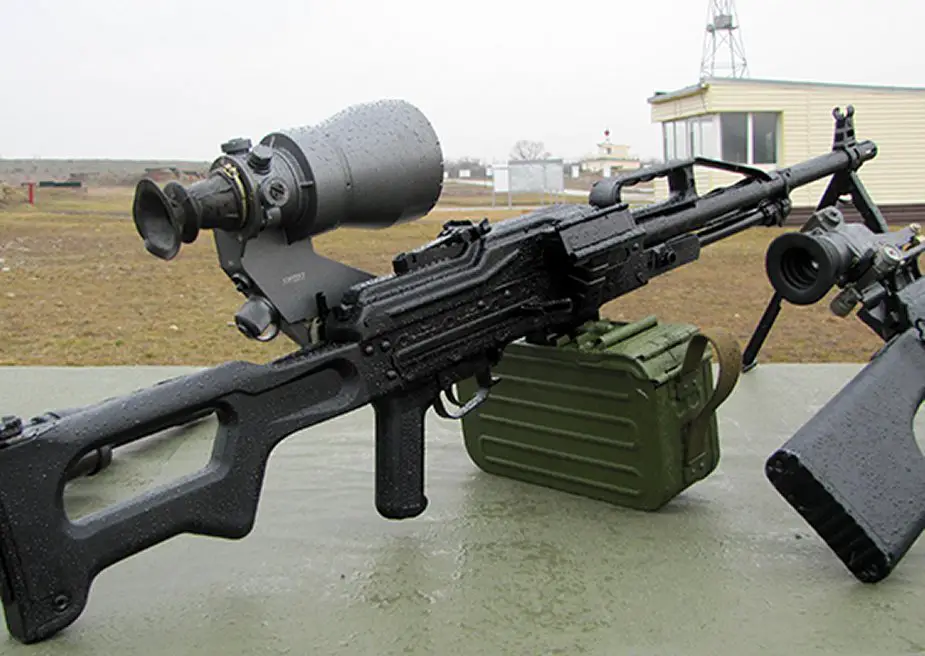Despite outstanding characteristics of Kalashnikov machine gun and its upgraded PKM option Russian weapons producers faced a problem. The Afghan campaign exposed the necessity to arm platoons with additional heavy machine guns. The decision to replace post-war RP-46 by RPK (Kalashnikov hand-held machine gun) was not very successful, the Zvezda broadcaster said.

PKP Pecheneg machine gun (Picture source: Russian MoD)
RPK is built with Kalashnikov rifle units and lacks firepower. The army preferred to have PK. A similar situation was reported during the Chechen campaign. The focus on PK as a hand-held machinegun produced new requirements to the weapon. It was necessary to engage in intensive fire without pauses to cool the barrel. There is no time to cool or replace it battle.
Tsniitochmash Institute began to deal with the problem in 1995. Several R&D were necessary to determine the factors which decrease machinegun fire efficiency. The problem was the incorrect temperature balance of PK barrel. Uneven heating displaces the center of impact. The designers changed the barrel contour and made it heavier to promote even heating.
The prospective Pecheneg machinegun has a barrel jacket and finning to improve heat discharge. It allows the gun to fire 600 cartridges non-stop. The machinegun can fire up to 1,000 cartridges per hour without losing its characteristics. None of the same class weapons enjoys such a capability. The replaceable barrel is no longer necessary. The barrel jacket performs additional functions. It increases the rigidity of the construction and decreases barrel fluctuations. It rules out any contact of the barrel with the legs which promotes close grouping of shots. The jacket has a handle to carry the gun which bars heated air that triggers blaze from sighting devices.
Pecheneg fire efficiency is 1.7-1.9 times higher than PKM although it has up to 80 percent of PKM units. The production tools are compatible and simplify the transition of the army to the new gun.
Despite good characteristics Pecheneg upgrade and introduction dragged because of a lack of finances. Production was launched at the mechanical plant in Kovrov in 1999 and the machineguns were supplied to the army and police engaged in the counterterrorist operation in Chechnya. Pecheneg was accepted into service in 2001 under 6P41 index. The Russian military engaged the gun in the armed conflict in South Ossetia in 2008. The process of rearming units with modern “Pecheneg” machineguns of various modifications has finished in the EMD’s combined-arms army, located in Amur, Jewish Autonomous region and Khabarovskiy Krai.
Pecheneg upgrade is ongoing. In 2013 an assault modification appeared for commandos. The gun is designed by bull-pup operating scheme with Picatinni rails to mount various sights, a light, laser ranger and other devices, the Zvezda reported.















